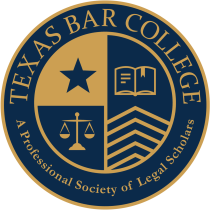Long COVID Can Be A Disability Protected by the Americans with Disabilities Act ("ADA")
/"Long COVID" may be considered a disability under the Americans with Disabilities Act, President Joe Biden said last Monday. "Many Americans who seemingly recover from the virus still face lingering challenges like breathing problems, brain fog, chronic pain and fatigue," Biden said in a speech marking the 31st anniversary of the statute. "These conditions can sometimes rise to the level of a disability." The president said his administration is working with agencies to ensure workers with persistent COVID symptoms "have access to the rights and resources" provided by the ADA.
Guidance Regarding When Long COVID Qualifies as a Disability under the ADA
Long COVID can be a disability under the ADA, Section 504, and Section 1557 if it substantially limits one or more major life activities. These laws and their related rules define a person with a disability as an individual with a physical or mental impairment that substantially limits one or more of the major life activities of such individual (“actual disability”); a person with a record of such an impairment (“record of”); or a person who is regarded as having such an impairment (“regarded as”). A person with long COVID has a disability if the person’s condition or any of its symptoms is a “physical or mental” impairment that “substantially limits” one or more major life activities.
Examples of common symptoms of long COVID include:
Tiredness or fatigue
Difficulty thinking or concentrating (sometimes called “brain fog”)
Shortness of breath or difficulty breathing
Headache
Dizziness on standing
Fast-beating or pounding heart (known as heart palpitations)
Chest pain
Cough
Joint or muscle pain
Depression or anxiety
Fever
Loss of taste or smell
This list is not exhaustive. Some people also experience damage to multiple organs including the heart, lungs, kidneys, skin, and brain. The situations in which an individual with long COVID might be substantially limited in a major life activity are diverse. Among possible examples, some include:
A person with long COVID who has lung damage that causes shortness of breath, fatigue, and related effects is substantially limited in respiratory function, among other major life activities.
A person with long COVID who has symptoms of intestinal pain, vomiting, and nausea that have lingered for months is substantially limited in gastrointestinal function, among other major life activities.
A person with long COVID who experiences memory lapses and “brain fog” is substantially limited in brain function, concentrating, and/or thinking.
Is Long COVID Always Protected Under the ADA?
No. An individualized assessment is necessary to determine whether a person’s long COVID condition or any of its symptoms substantially limits a major life activity. The CDC and health experts are working to better understand long COVID.
What Rights Do People Whose Long COVID Qualifies as a Disability Have Under the ADA?
People whose long COVID qualifies as a disability are entitled to the same protections from discrimination as any other person with a disability under the ADA, Section 504, and Section 1557. Put simply, they are entitled to full and equal opportunities to participate in and enjoy all aspects of civic and commercial life. For example, this may mean that businesses or state or local governments will sometimes need to make changes to the way that they operate to accommodate a person’s long COVID-related limitations.









